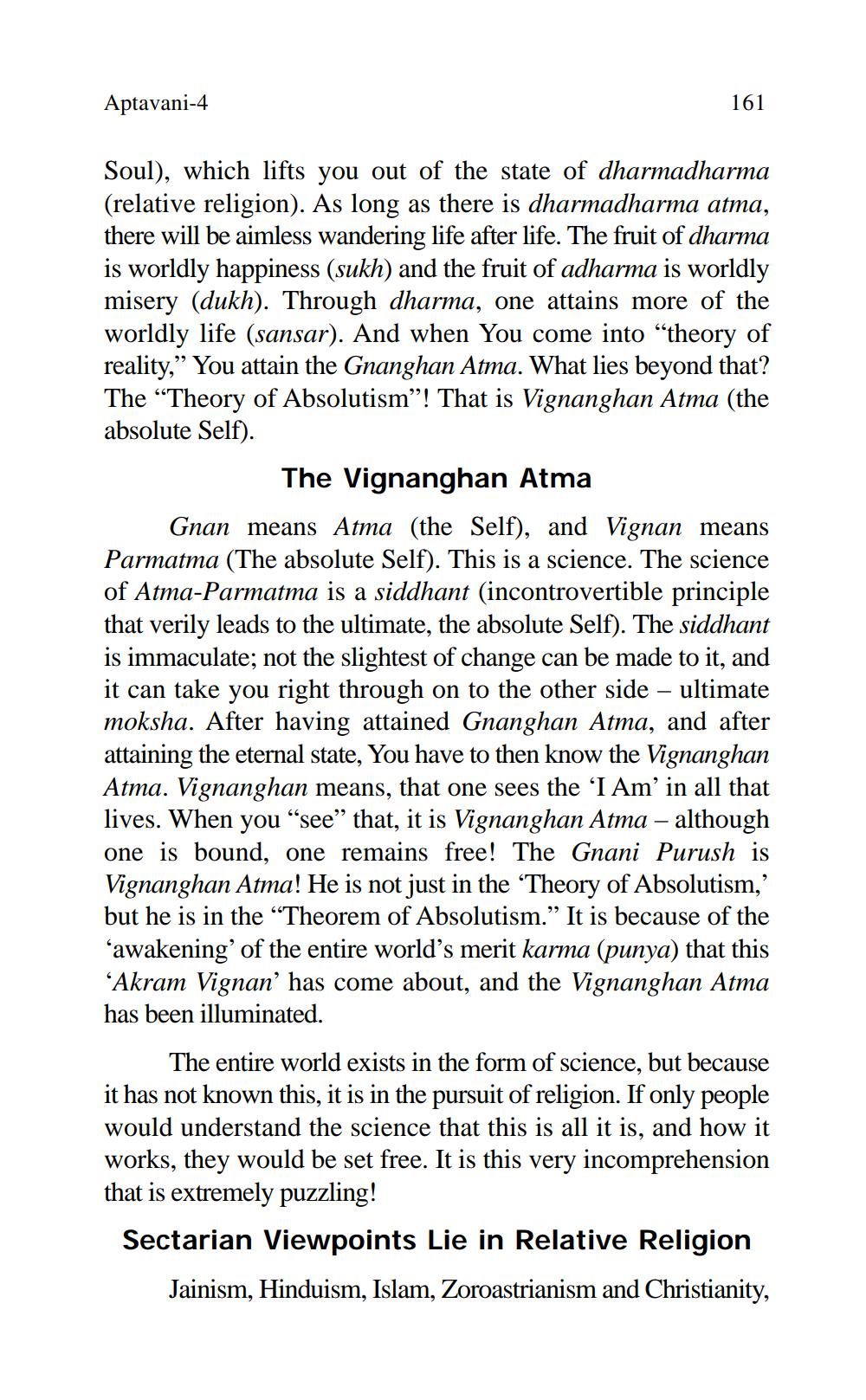________________
Aptavani-4
161
Soul), which lifts you out of the state of dharmadharma (relative religion). As long as there is dharmadharma atma, there will be aimless wandering life after life. The fruit of dharma is worldly happiness (sukh) and the fruit of adharma is worldly misery (dukh). Through dharma, one attains more of the worldly life (sansar). And when You come into “theory of reality,” You attain the Gnanghan Atma. What lies beyond that? The “Theory of Absolutism”! That is Vignanghan Atma (the absolute Self).
The Vignanghan Atma Gnan means Atma (the Self), and Vignan means Parmatma (The absolute Self). This is a science. The science of Atma-Parmatma is a siddhant (incontrovertible principle that verily leads to the ultimate, the absolute Self). The siddhant is immaculate; not the slightest of change can be made to it, and it can take you right through on to the other side – ultimate moksha. After having attained Gnanghan Atma, and after attaining the eternal state, You have to then know the Vignanghan Atma. Vignanghan means, that one sees the 'I Am’ in all that lives. When you see” that, it is Vignanghan Atma - although one is bound, one remains free! The Gnani Purush is Vignanghan Atma! He is not just in the 'Theory of Absolutism, but he is in the “Theorem of Absolutism.” It is because of the ‘awakening of the entire world's merit karma (punya) that this 'Akram Vignan' has come about, and the Vignanghan Atma has been illuminated.
The entire world exists in the form of science, but because it has not known this, it is in the pursuit of religion. If only people would understand the science that this is all it is, and how it works, they would be set free. It is this very incomprehension that is extremely puzzling! Sectarian Viewpoints Lie in Relative Religion
Jainism, Hinduism, Islam, Zoroastrianism and Christianity,




